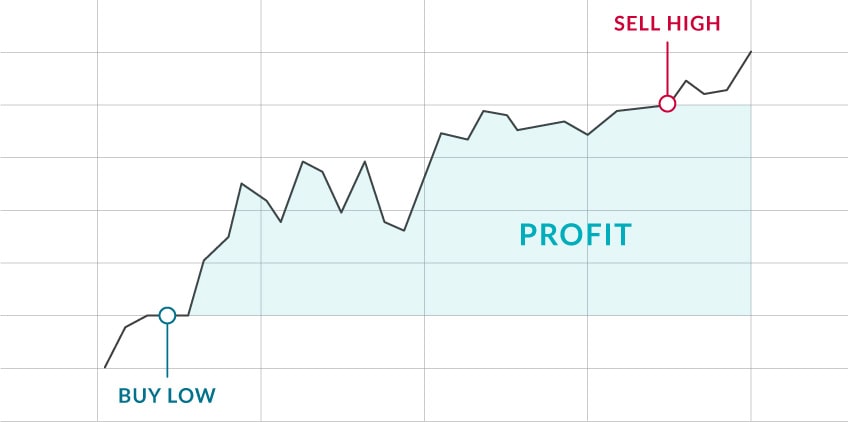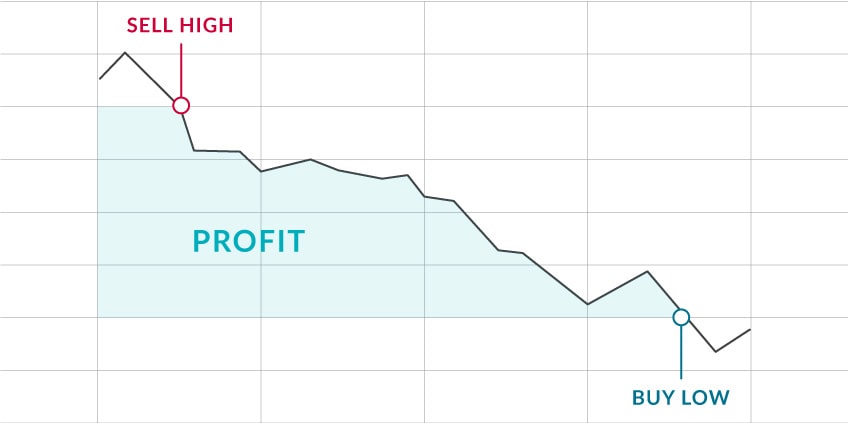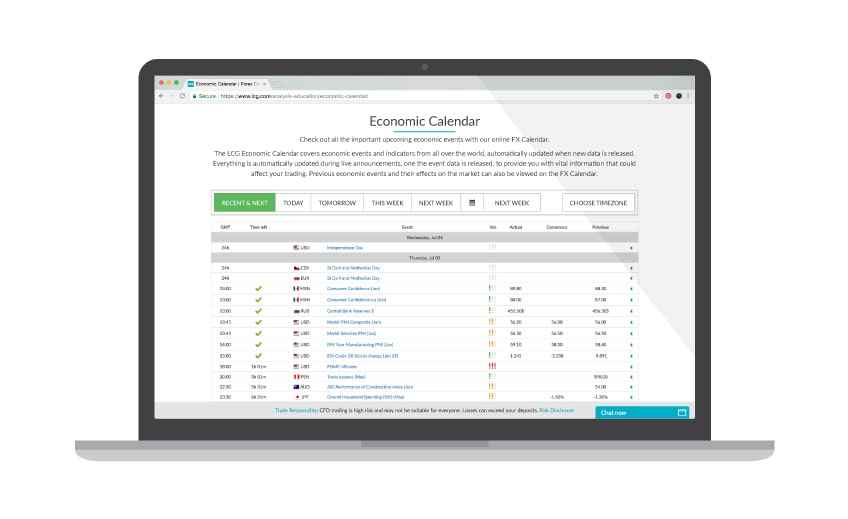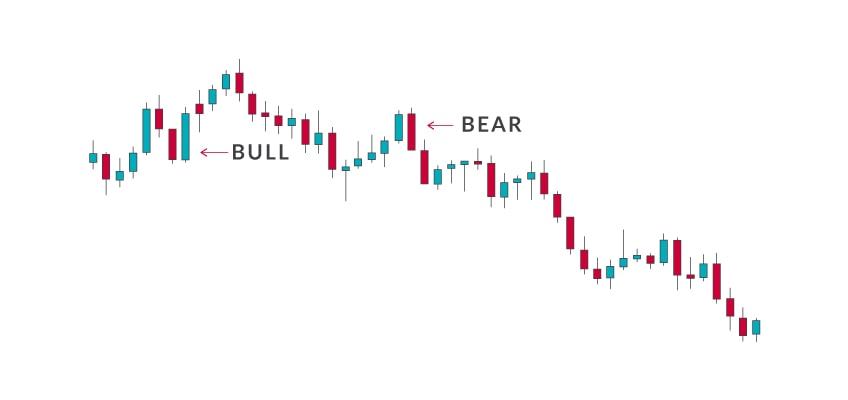Cryptocurrencies are taking the world by storm. One day cryptocurrencies could be widely accepted as money and replace fiat currencies like the US dollar and British pound. This could be especially true as national governments move toward a cashless society.
The price of ‘cryptos’ like Bitcoin have risen dramatically. In 2011, one bitcoin was worth less than $1 but by 2017, it was worth nearly $20,000. Since then the price has been very volatile, offering excellent opportunities for trading in both rising and falling market conditions.
Trading cryptocurrency CFDs
LCG offers trading on cryptocurrency CFDs with other asset classes in one account. Contracts for Difference or CFDs, as they are commonly referred to, are derivative instruments that enable traders to speculate on a wide range of financial markets, without taking direct ownership of the underlying asset.
To read more about CFDs click here.
The cryptocurrencies are traded as pairs against regular currencies. For example Bitcoin, the most famous ‘crypto’ is traded as
- BTC/USD – Bitcoins valued in US dollars
- BTC/GBP – Bitcoins valued in British pounds
- BTC/EUR – Bitcoins valued in euros
- BTC/JPY – Bitcoins in Japanese yen
- BTC/CHF – Bitcoins in Swiss francs
There is no need to obtain an account with a Bitcoin exchange or a bitcoin wallet to trade. LCG takes the cryptocurrency price from the most reliable exchanges like CoinDesk as well as the CME futures price for Bitcoin.
A cryptocurrency CFD trading example
Using CFDs to trade cryptocurrencies offers the flexibility of taking a position on whether Bitcoin rises or falls without having to actually own any Bitcoin. This means that there are more trading opportunities available, as profit can be made from buying or selling cryptocurrencies.
The main cost when trading a cryptocurrency CFD is the spread. The spread is the difference between the price you can buy at and the price you can sell at. For example, the price for Bitcoin may be bid 6000 / offer 6050, which means a spread of 50.
Click here to find the spreads and costs of trading cryptocurrencies.
Cryptocurrency trading example 1: Going long
Instead of taking ownership of bitcoin, you can place a ‘long position’. Your position will increase in value as bitcoin’s price increases. If bitcoin’s price falls, then your position will lose value.

In this example, the price of Bitcoin is $6000/6050. A trader buys 5 CFDs of Bitcoin for $6050. Each CFD is worth 1 bitcoin (or 100 Bitcoin cents) so the size of the position is $30,250.
If the price rises 500 dollars to $6500/6550 and the trader closes out the position at $6500 (valued at $32,500) they make a $2250 profit. Alternatively, if the price of Bitcoin falls to $5500/5550 (meaning the position is now worth $27,500), once the position is closed, it would mean a loss of $2750.
Cryptocurrency trading example 2: Going short
You can also place a ‘short’ position so if bitcoin's price drops, your position increases in value and if the price goes up, your position decreases in value. This is akin to short-selling a company’s shares.

In this example, the price of Bitcoin is $6000/6050. A trader sells short 5 CFDs of Bitcoin for $6000 so the size of the position is $30,000.
If the price rises 500 dollars to $6500/6550 and the trader closes out the position at $6550 (valued at $32,750) they make a $2,750 loss. Alternatively, if the price of Bitcoin falls to $5500/5550 (meaning the position is now worth $27,750), once the position is closed, it would mean a profit of $2,250.
Forecasting Cryptocurrency prices
There a two main approaches to analysing cryptocurrencies: fundamental and technical analysis. Fundamental analysis uses the news and events affecting the coins, exchanges and other crypto businesses. Technical analysis uses only price data to map areas of historical supply and demand for the cryptocurrencies.
Fundamentals

Government regulation, the introduction of new cryptocurrency technology and problems at Cryptocurrency exchanges can affect supply and demand for the coins.
One of the advantages of trading cryptocurrencies is that they appear to have minimal correlation with traditional asset classes like bonds or the stock market.
As an example of government regulation, the introduction of the Bitcoin CME futures contract is widely credited with helping put a top in Bitcoin prices in 2017. Institutional investors who tended to be more bearish drove prices lower by short selling the new contracts.
There have been several attempts to introduce a Bitcoin exchange-traded fund. Rumours of the new fund, which could attract more buyers because of the ease of access to ETFs through regular trading accounts, will typically send the price higher. The subsequent news that the ETF will not be approved by agencies like the SEC in the United States then drives the price back down again.
The performance of cryptocurrency firms, especially in counties with high ownership like South Korea and Japan tend to have an over-sized impact on the price action. The hacking and collapse of the Mt Gox and YouBit digital currency exchanges caused investors to lose faith in the safety of funds held in cryptocurrencies and caused a sharp drop in bitcoin and altcoin prices.
Technical Analysis

Some believe the high concentration of retail traders makes cryptos more true to traditional chart patterns and indications of oversold, overbought conditions etc.
Technical analysis techniques can be applied to any market where the price can freely fluctuate and data is available to see those fluctuations. The LCG Trader platform has a full suite of all the best-known technical indicators and chart drawing tools.
Read more about the trading platforms offered by LCG here.
Trading cryptos on margin
Using financial leverage, investors are able to trade the markets with a smaller initial deposit. This makes CFD trading more accessible and cost-effective than other investment methods. However, it also carries an extra level of risk. It is critical that an investor fully understands how CFD trading works and has a sound risk management strategy in place before opening a position.
Advanced order types to trade cryptos
Trading cryptocurrencies with LCG’s advanced trading platforms will offer the ability to utilise advanced order types to place trades and importantly, to manage risk. For example, there will be the ability to buy or sell at the current market price or select a preferred entry point using limit and stop orders. These orders will be automatically triggered when the price of the cryptocurrency hits that level.
 Change Language ▼
Change Language ▼

